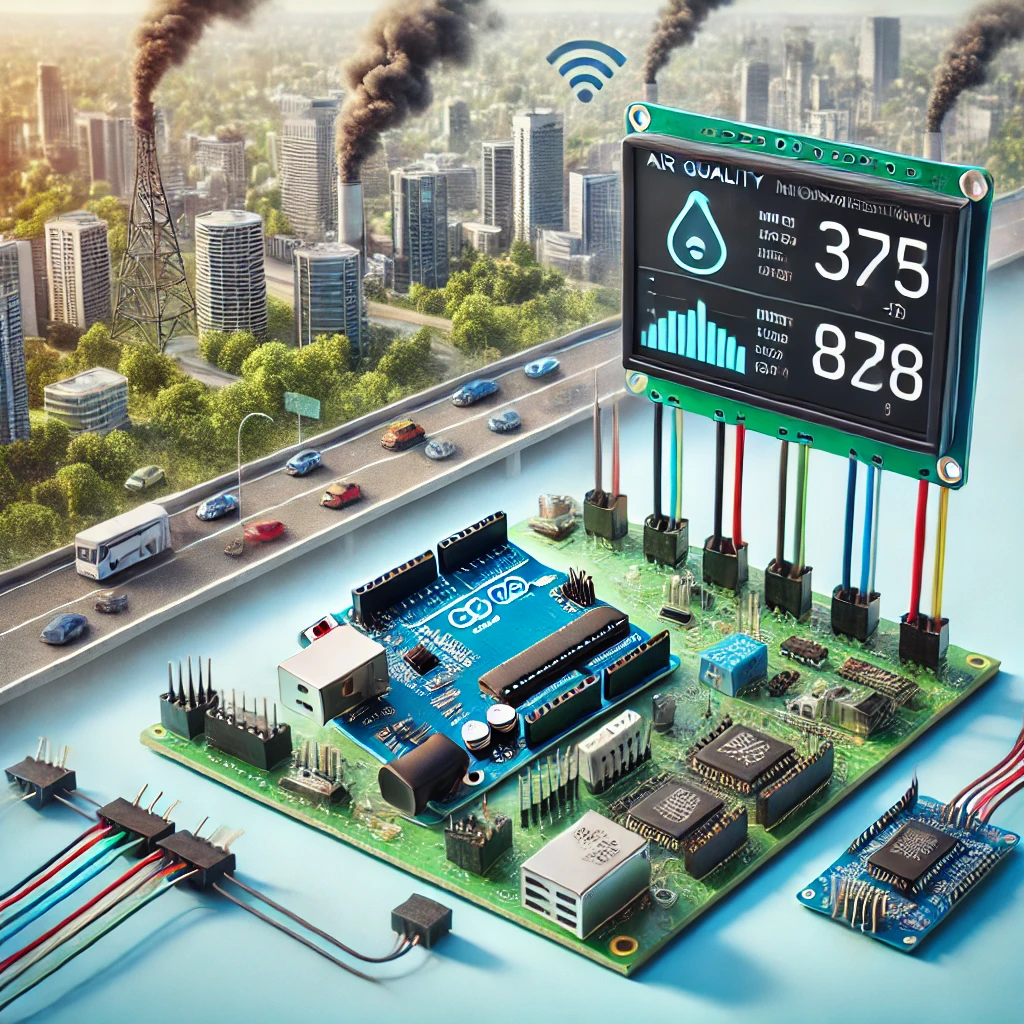IoT-Enabled Air Quality Monitoring System Using Arduino
1 in stock
The IoT-Enabled Air Quality Monitoring System is an advanced project designed to measure and analyze air pollution levels in real-time. Using Arduino and various environmental sensors, this system collects data on air quality parameters such as temperature, humidity, CO₂ levels, and particulate matter (PM). The collected data is then transmitted to an IoT platform for remote monitoring and analysis.
₹7,788.00 ₹10,030.00 (Incl. GST)
1 in stock
IoT-Enabled Air Quality Monitoring System Using Arduino
Introduction
The IoT-Enabled Air Quality Monitoring System is an advanced project designed to measure and analyze air pollution levels in real-time. Using Arduino and various environmental sensors, this system collects data on air quality parameters such as temperature, humidity, CO₂ levels, and particulate matter (PM). The collected data is then transmitted to an IoT platform for remote monitoring and analysis.
Key Features
- Real-Time Air Quality Monitoring: Detects pollutants such as CO₂, PM2.5, PM10, and harmful gases.
- Arduino-Based System: Uses sensors like MQ135, DHT11, and SDS011 for accurate readings.
- IoT Integration: Sends data to cloud platforms like ThingSpeak or Blynk for real-time tracking.
- User Alerts & Notifications: Provides alerts when pollution levels exceed safe limits.
- Portable & Low Power Consumption: Can be powered by batteries or solar panels for outdoor use.
How It Works
- Sensors collect environmental data such as gas concentrations and air temperature.
- Arduino processes the data and sends it to an IoT server via WiFi or GSM module.
- Users can access air quality reports through a web dashboard or mobile app.
- Alerts are triggered if pollution levels cross predefined thresholds.
Applications
- Smart Cities: Helps government authorities monitor air pollution levels.
- Industrial Safety: Ensures workplace air quality in factories and mines.
- Home & Office: Provides real-time indoor air quality monitoring for a healthier environment.
This IoT-enabled air quality monitoring system is an essential tool for promoting environmental awareness and ensuring better living conditions through data-driven insights.





